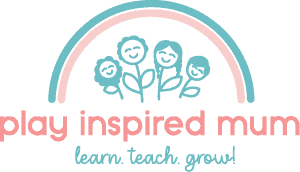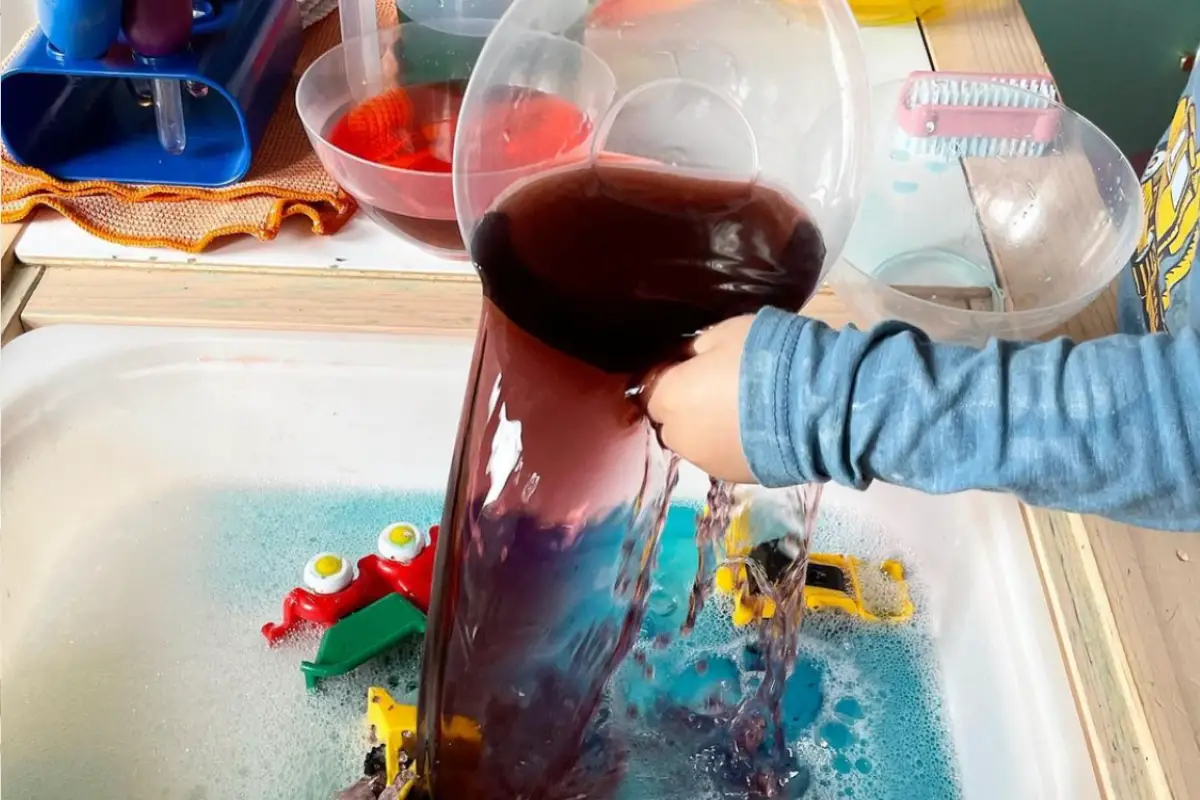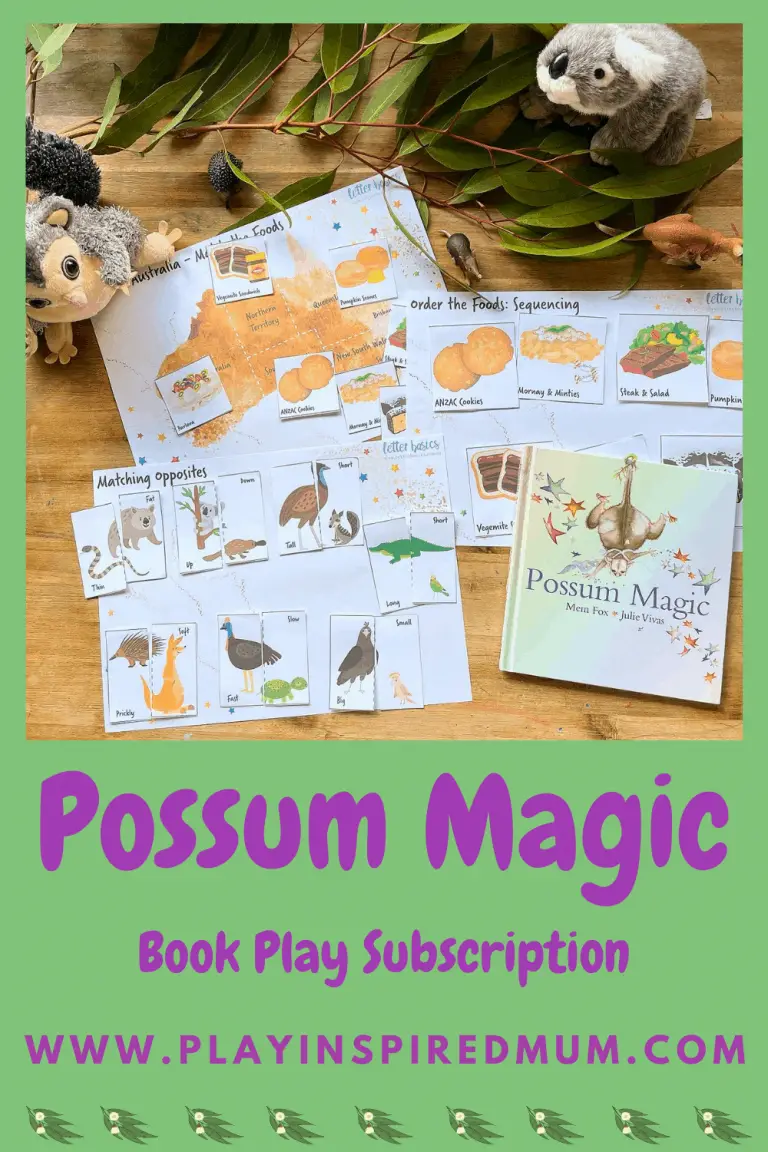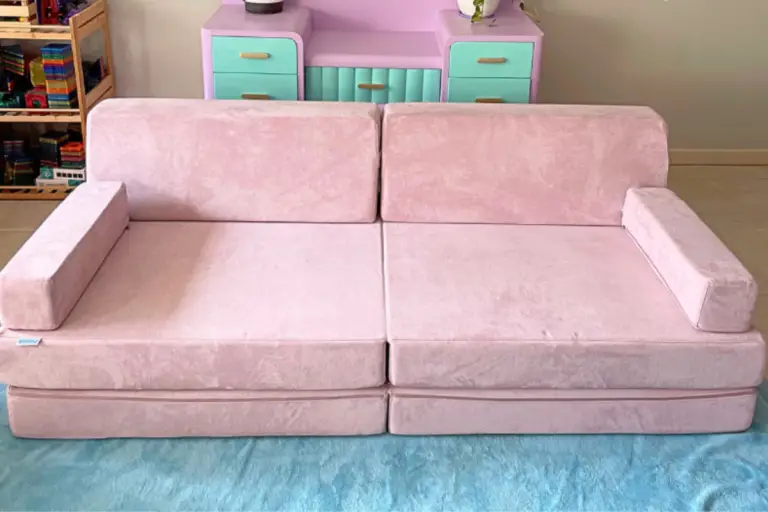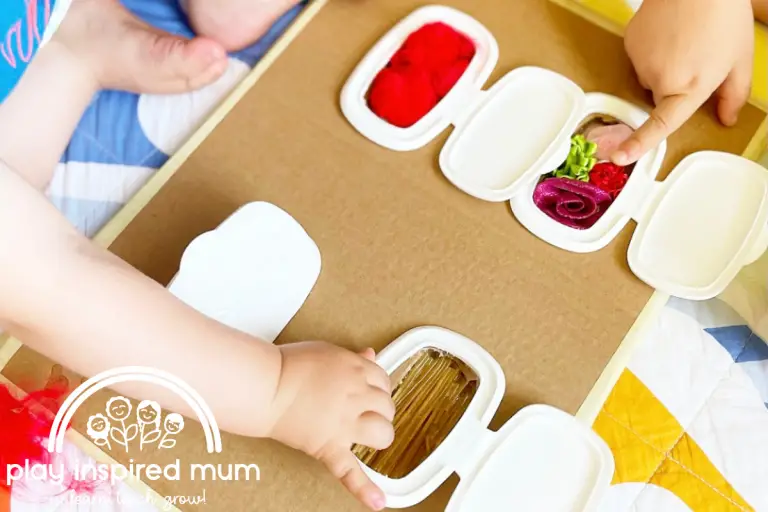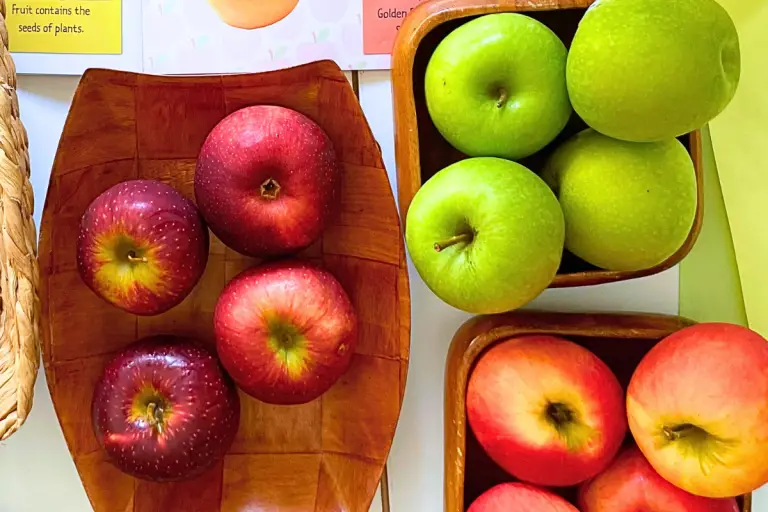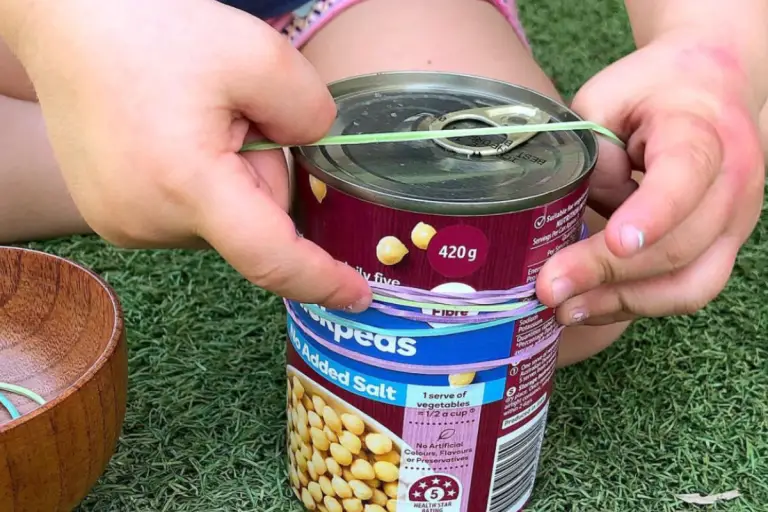Rainbow Ripples: the Magic of a Coloured Water Pouring Station
Disclosure: This blog contains affiliate links which I may earn a small commission from if you purchase through them, at no extra cost to you.
Level up your water play with a coloured water pouring station! Use vessels you have at home already to create a wonder water wonderland for your toddler to learn and grow.
This activity has been a huge success over and over again with all three of my children and I’m so excited to share it with you.
A coloured water pouring station is a testament to the fact that toddlers thrive with simple done well.
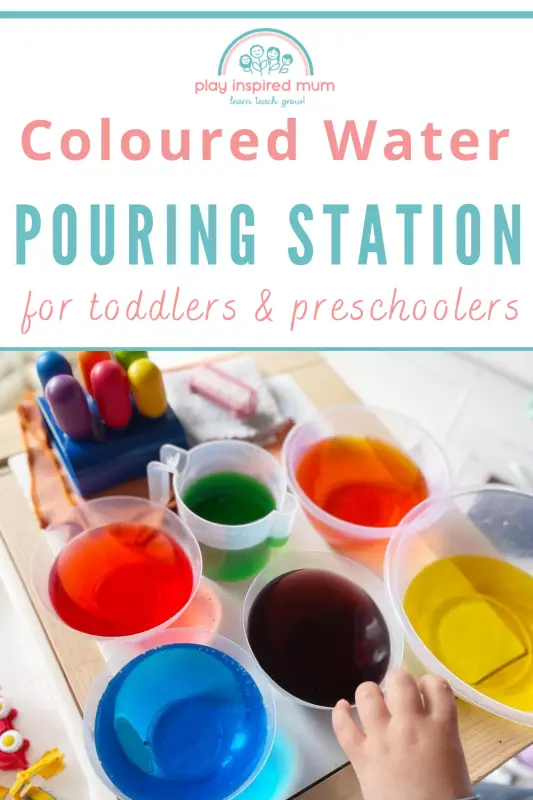
Introduction to Coloured Water Pouring Stations
The pouring station, initially a simple toddler activity designed for water play, has evolved into an enchanting coloured water pouring station.
This transformation caught the attention of parents and educators worldwide, making it a viral sensation.
With just a few containers, some water, and a dash of food colouring colour, anyone can set up this vibrant sensory play area.
The addition of primary colours to the playset not only enhances the visual appeal but also introduces toddlers to colour.
This includes colour recognition and the basics of mixing to create secondary colours.
The simplicity of setting up this activity belies its deep educational benefits.
It fosters skills that can be developed through play:
- Fine motor skills
- Gross motor skills
- Experimental play
- Cause and effect learning
- Crossing the midline
- Bilateral coordination
- Hand-eye coordination
- Early numeracy concepts
Each pour, spill, and splash immerses toddlers in a hands-on learning experience that underscores the essential life skills of cause and effect and learning through play.
The pouring station, celebrated as one of the best toddler activities, underscores the importance of open-ended play in childhood development.
And in simple terms, toddlers love it.
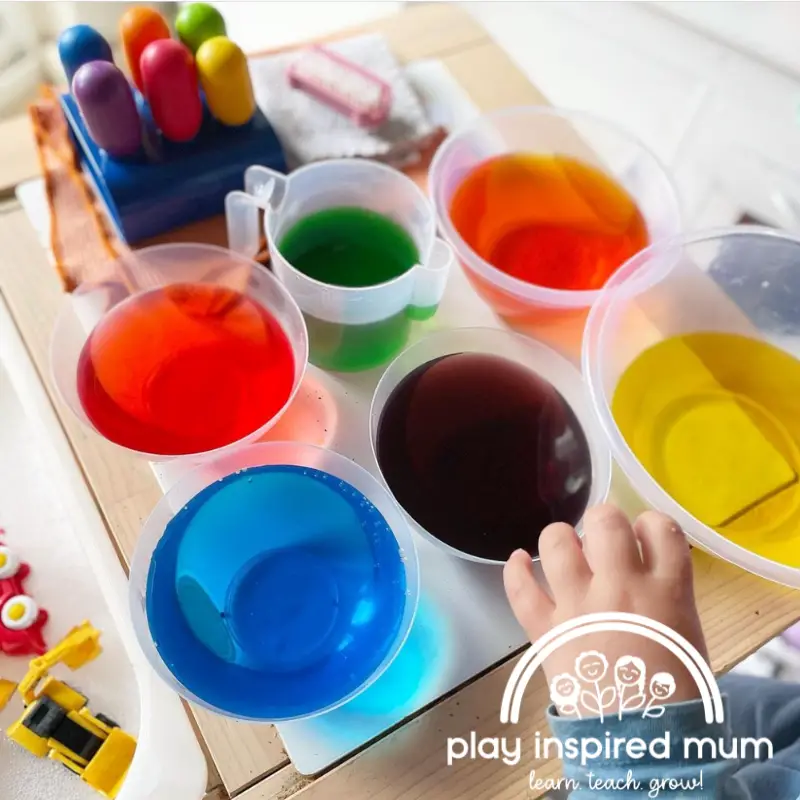
Setting Up Your Pouring Station
To set up a captivating coloured water pouring station, one will need a variety of containers and cups, which serve as the foundation for this play idea.
I chose food colouring to mix primary colours into various jugs and bowls of water:
- red
- blue
- yellow
these provide a vibrant base that effortlessly teaches colour recognition and how primary colours blend to form secondary ones.
- Red + Yellow = Orange
- Blue + Red = Purple
- Blue + Yellow = Green
The beauty of using primary colours lies in their simplicity and the door they open to exploring new hues, a fundamental concept in learning colours.
For a mess-free experience, selecting a location becomes as crucial as the activity itself.
I found that doing this outdoors or in an area like the Trofast table, where spills are more so contained, ensures that the focus remains on the fun and educational value of the play.
For indoors water play, our Rudie Nudie Waterproof Play Mat is the protector of floors every time.
Safety is paramount, so I made sure all materials were non-toxic and the play area was slip-resistant to prevent any accidents during this water play idea.
Through this setup, toddlers not only enjoy the sensory richness of water play but also sharpen their fine motor skills and hand-eye coordination.
Mathematical concepts such as full, empty, heavy and light laying the groundwork for early numeracy skills.
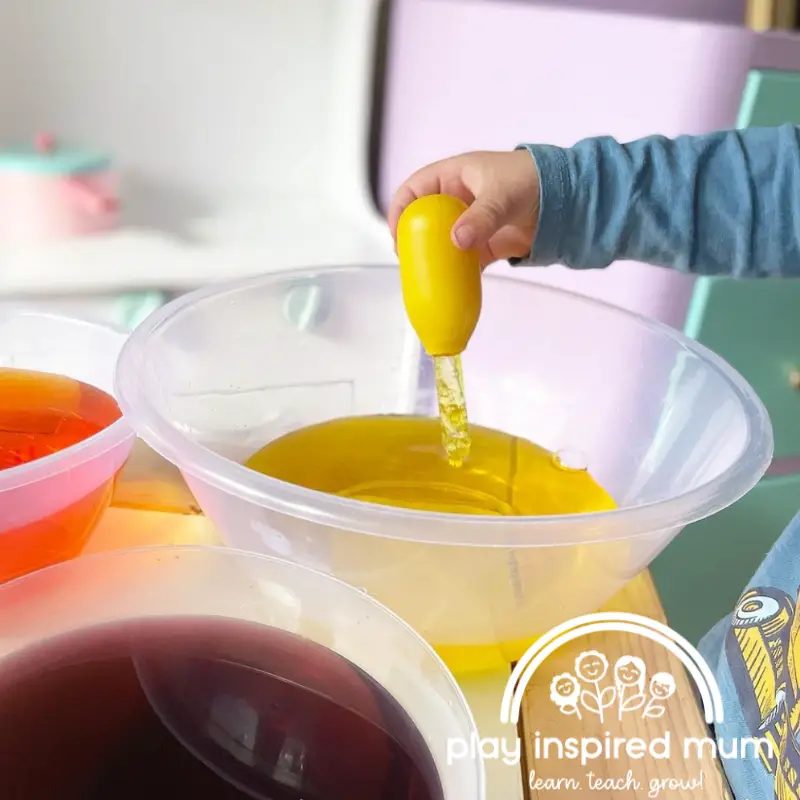
What you need to make a colourful pouring station
- Water
- Food colouring
- Various jugs, bottles, bowls
- Eye droppers, ladles, funnels (optional)
- Waterproof Play Mat (optional, but if indoors and very good idea)
This way I am confident that the entire activity is taste safe incase curiosity beats the toddler and a little taste is had or a splash reaches parted lips.
I use food colouring to colour our pouring station water.
You could also use non toxic paints or dyes to colour the water.
Your kitchen cupboards are a treasure trove for water vessels. Mixing or cereal bowls are perfect, along with measuring jugs and pitchers.
Over the years we have found all sorts of treasures in op-shops and recycling centres that we use in our play activities, just like this one.
One resource I did invest in was this jumbo eye dropper set. We have used it time and time again. Not only is it perfect for fine motor development but also sequencing events.
The dropper needs to be used in a few steps for success
- Submerge the tip
- Express the air
- Release the hold and wait for the water to be drawn into the well
- Lift the dropper out without squeezing
- Position, and squeeze!
These eye droppers have been so useful for learning about sequencing and patience too for that matter!
How to set up your colourful water pouring station
The first step is to set up your space.
Naturally most would gravitate to outdoors when they think water play, for good reason.
We all know that water is going to be splashed around when handed to a toddler.
That being said, there are ways to manage water play indoors too.
A water proof play mat can keep your floor dry and slip free, or better yet, set up your pouring station in the bath or shower recess.
Placing the pouring bowls and jugs into a shallow storage container can be a useful way to catch and contain spills.
Then it is just a matter of filling the vessels with water, add the food colouring.
Step back and invite your toddler to come and check it out.
So simple.
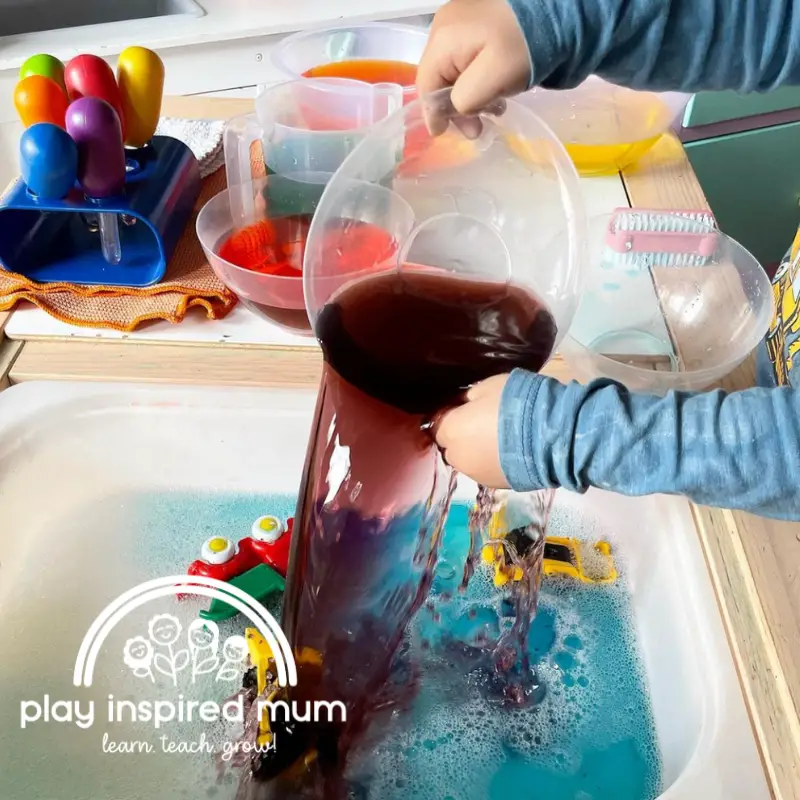
Educational Benefits of Colourful Water Play
Engaging toddlers in coloured water play has emerged as a transformative approach to early education.
It illuminates a path for mastering fine motor skills as young ones navigate the complexities of pouring and manipulating water.
Through the vibrant interaction of primary colours blending into secondary hues, children discover the essentials of colour recognition.
This paves the way for early numeracy skills, as they begin to differentiate and count objects based on their colours.
The process fosters a deep connection between sensory experiences and cognitive development.
Underpinning this method is the powerful concept of learning through play.
It anchors the belief that discovery and experimentation are at the heart of understanding the world around us.
Children delve into the basics of science and life skills, exploring cause and effect in real-time.
Observing colour changes and predicting outcomes fuel their curiosity, driving a deeper engagement with the activity.
Such experimental play not only enhances hand-eye coordination but also boosts gross motor skills, laying a strong foundation for future learning adventures.
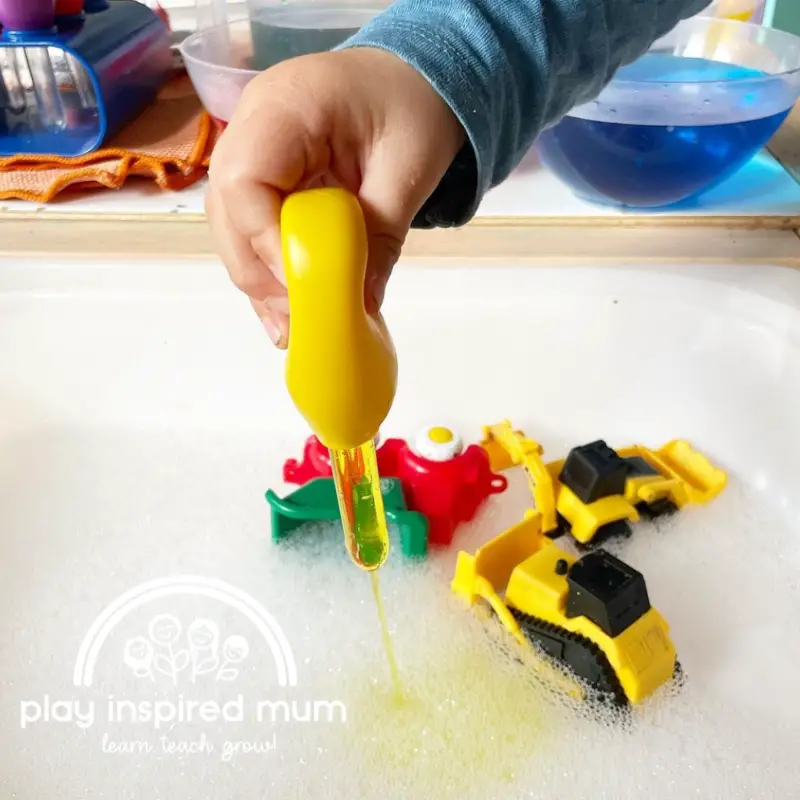
Engagement and Extension Ideas
To maintain interest in our coloured water pouring station, a dynamic approach is essential.
I found that altering the hues of the water occasionally kept things fresh and exciting.
By integrating primary colours one day and secondary colours the next, kids eagerly anticipated what combination would come up.
This not only engaged them in sensory play but subtly introduced the science of colour mixing.
Introducing new tools for pouring and scooping also played a pivotal role.
Items as simple as eye droppers or small pitchers offered novel ways for toddlers to interact with the water.
This variety challenged their fine motor skills and hand-eye coordination more robustly than before.
The excitement on their faces when mastering a new tool was truly rewarding.
For an extended learning experience, I incorporated different shapes and sizes of containers into the mix.
Sorting and counting became a natural extension of play.
Children began recognizing patterns and developing early numeracy skills.
Incorporating elements of play-based learning, they experimented with cause and effect without even realizing they were engaging in educational activities.
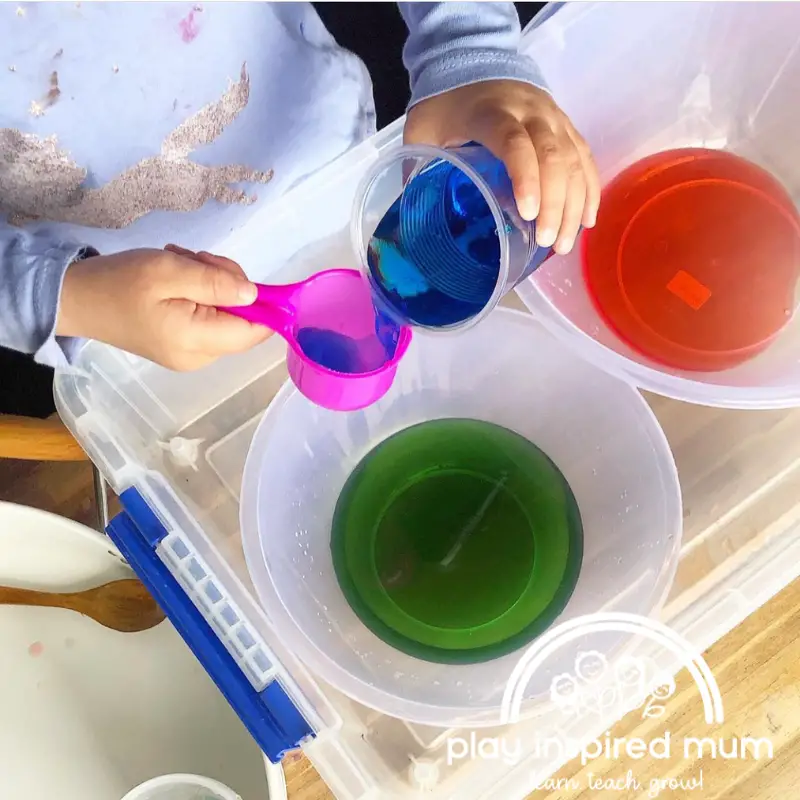
Wrapping Up With a Rainbow
As we’ve explored the vivid world of coloured water pouring stations, it’s clear that the joys of messy play extend far beyond splashes and spills.
I’ve watched with delight as toddlers blended primary colours into mesmerizing secondary shades, their eyes lighting up at the magic unfolding before them.
They hadn’t just engaged in sensory play; they had embarked on a journey of discovery and learning.
Through simple acts of pouring, they honed their fine motor skills and developed an early appreciation for science.
The act of predicting the outcome of mixing red and blue to create purple introduced children to basic science concepts, fostering a love for experimental play.
The value of learning colours, enhancing hand-eye coordination, and grasping the fundamentals of early numeracy skills cannot be overstated.
Such activities empower toddlers with knowledge and abilities that form the cornerstone of their educational journey.
By recognizing the significance of colour recognition and the role it plays in cognitive development, we, as parents and educators, open a gateway to a richer understanding of the world for our little ones.
Encouraging open-ended play through a pouring station has shown me that the best toddler activity is one that marries education with entertainment, seamlessly transforming every moment into an opportunity for growth and exploration.
Set up your own colourful water play idea.
Witness for yourselves the educational benefits that emerge from what seems like simple play.
Embrace the spills and the mess, for they are the canvas upon which your child draws their understanding of the world.
Let’s give our children the freedom to explore, experiment, and learn through play, enriching their lives with the vibrant ripples of knowledge a coloured water pouring station brings.
